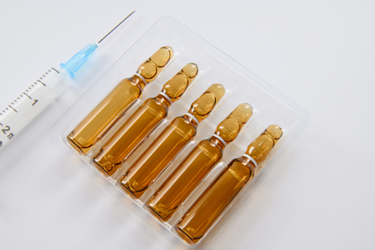5 Hot-Button Issues In Parenteral Packaging
By Fran L. DeGrazio, Strategic Parenteral Solutions LLS

Innovation and scientific understanding remain at the heart of the pharmaceutical parenteral packaging industry. At the recent PDA Parenteral Packaging Conference held in Venice, Italy, these aspects were reinforced throughout the two-day event. The specific themes that were reinforced are:
- Container closure integrity (CCI)
- Deep cold storage
- European Medical Device Regulation (MDR) Annex 1
- Risked-based scientific approaches
- Sustainability
One of the main takeaways from the event is that none of these themes can be viewed in isolation. If anything, the conference reinforced the need for interplay and understanding across all these areas.
It is imperative to stay on top of the developing trends in sterile products because regulatory approvals show increasing numbers of injectable drugs since 2016. As presented by Brigitte Reutter-Härle of Vetter during the Prefilled Syringe Interest Group (PSIG), 54% of newly approved drugs in 2022 were injectable.
1. Container Closure Integrity (CCI)
Industry work continues in the understanding of container closure integrity (CCI). An FDA representative, Erika Pfeiler, spoke on the issue of multi-dose preservative-free drug products. A major takeaway from this presentation was the consideration of CCI as both passive and active. “Passive” means maintaining sterility by showing the package is integral throughout its shelf-life. “Active” CCI means testing must be conducted with the package “in-use” and over its shelf-life. So, active testing should be conducted under strenuous conditions.
As far as deterministic CCI testing is concerned, it seems that the most common techniques used are helium leak detection and laser-based headspace CO2 analysis. These are used at both room temperature conditions and many of the low temperature conditions that are being evaluated for various biologic, gene, and cell therapies.
2. Deep Cold Storage
Strategies for method development and understanding CCI of packaging at deep cold temperatures was a major theme of the conference. Deep cold storage is defined as that below minus 60 degrees C.
Current packaging materials have been universally used at refrigerated (plus or minus 5 degrees) and more traditional frozen temperatures (minus 20 degrees C plus or minus5 degrees). Currently, there is significant industry interest in ultra-low temperatures (minus 50 C to minus 80 C) and cryogenic temperatures.
These environmental conditions are of interest not only for vial/stopper systems but for prefillable syringe systems as well. In order to begin to understand the appropriateness of various systems in these deep cold conditions it is important to first qualify and understand the systems and components at the material level. The weaknesses of materials under these conditions must be understood and mitigated for the ultimate system to be appropriate for use. Understanding failure modes is an approach that is risk-based and scientifically sound, reinforcing the regulatory approach that should be taken in qualifying packaging and delivery systems for drug products.
3. Medical Device Regulation (MDR) Annex 1
A major gap noted in the industry is the need for experts who can assist companies in getting ready to meet Annex 1 regulations in the new Medical Device Regulation (MDR). This document is written for the manufacture of sterile medicinal products, including combination products. A major update included is a defined list of required information to address General Safety and Performance Requirements (GSPRs). The PDA instituted a team two years ago that is working to provide clarity on this with respect to prefillable syringe systems (PFS) by developing an updated Technical Report 73-2. The original report discussed technical issues relating to PFS, while the update will provide guidance on addressing the GSPRs (the updated report is still under development with no target date for release).
The approach to regulatory approvals in Europe (European Medicines Agency [EMA]) is significantly different than in North America (FDA). In Europe, a conformity assessment of the syringe must be completed by a notified body. The purpose of the notified body is to assess the safety and performance of the medical device and provide a notified body opinion. Once the conformity assessment is received, a submission is made to the EMA, which is responsible for assessing the quality, safety, and efficacy of the medicinal product.
The approach with the FDA in North America is for the lead review division to be based on the primary mode of action (PMOA) of the combination product. Once a drug or biologic is added to the syringe (for instance), it is considered from a regulatory perspective to be a combination product. The FDA’s Office of Combination Products can provide guidance to the sponsor, and the review will be covered jointly by the appropriate divisions.
The updated version of EU MDR Annex 1 (GSPRs) reinforces the fact that regulators desire risk management and scientific approaches to drug packaging, delivery, and their associated processes and contains additional guidance across many areas that are not mentioned herein. Therefore, the entire document should be reviewed for implementation, as its transition period becomes effective in December 2028.
4. Risk-based Scientific Approaches
Many of the presentations at the conference were technical in nature, reinforcing the fact that the scientific approach to packaging and delivery continues to be important in developing a safe product for the end patient. One theme that was repeated through several of the presentations was the approach of understanding the material, component, and system. Historically, systems may have been evaluated for use — whether a vial system, cartridge system, or prefillable syringe system — without a methodical approach to understanding the risk of the components or the individual materials used to form the components (e.g., elastomer or resin) or used in the system (e.g., silicone oil lubricant).
From an innovation standpoint, new transportation/storage and sterilization methods are needed in order to satisfy the needs of the innovative new drug formulations. For instance, transporting under ultra-cold conditions, and sterilizing using gamma irradiation (e.g., versus steam autoclave due to the nature of the drug product). Risk-based approaches should be exercised for qualifying these products.
Another key takeaway from these sessions is the need to do work early in development to qualify packaging components. For instance, Jean-Sebastien Steffen of Lonza spoke about the relationship between viscosity and injection force to optimize development cost and the timeline. His recommendation was to characterize the various PFS systems concurrent to the drug formulation development process. Once a drug formulation is finalized, the choice of PFS should be confirmed. The total combination of drug and PFS can then go through formal verification and stability.
5. Sustainability
Lastly, future sustainability of pharmaceutical packaging and delivery was a major topic of discussion. The idea of “circular packaging” is one that is actively being addressed by many of the major pharmaceutical companies. Many different approaches are being taken, but most of them look at the entire supply chain for improvement. This includes the primary drug packaging and device, the fill/finish process, secondary packaging, and shipping. Three scopes have been defined to address reductions. These are: Scope 1 (pharmaceutical companies’ facilities), Scope 2 (energy used at the pharmaceutical facilities), and Scope 3 (upstream and downstream activities). Upstream activities means addressing suppliers to the industry, such as those in pharmaceutical packaging.
This reduction activity will be mandatory as many laws are being written to encourage this movement. The pharmaceutical industry will not be excluded from meeting these requirements in the future. In Europe, the European Chemicals Agency provides oversight to guidance, including Registration, Evaluation, Authorisation and Restriction of Chemicals (REACH) and the Waste Framework Directive. In the U.S., a new multipoint executive order entitled Revitalizing our Nation’s Commitment to Environmental Justice for All was published on April 21, 2023, and a piece of this that will have a direct impact on the pharmaceutical industry is the national strategy on preventing plastic pollution, to be released by the Environmental Protection Agency.
In summary, many of these packaging issues will need innovative solutions in order to balance the environment, patient needs, and business needs. The next PDA Packaging meeting is expected to occur April 23 and 24, 2024.
About The Author:
 Fran DeGrazio is a Kymanox executive advisor and is president and principal consultant for Strategic Parenteral Solutions LLS. She has more than 35 years of experience in the pharmaceutical packaging and delivery industry with extensive expertise in sterile drug product systems, including vial container closure systems and prefillable systems for combination products. Previously, she held numerous strategic and technical roles at West Pharmaceutical Services, including in R&D, quality & regulatory, analytical laboratories, and scientific affairs. Her final role prior to retiring from West was as Chief Scientific Officer. She is the recipient of the PDA Packaging Science Award for 2021, Philadelphia Business Journal 2018 Healthcare Innovators of the Greater Philadelphia Region Award, and the Healthcare Businesswoman’s Association Luminary Award for West in 2017.
Fran DeGrazio is a Kymanox executive advisor and is president and principal consultant for Strategic Parenteral Solutions LLS. She has more than 35 years of experience in the pharmaceutical packaging and delivery industry with extensive expertise in sterile drug product systems, including vial container closure systems and prefillable systems for combination products. Previously, she held numerous strategic and technical roles at West Pharmaceutical Services, including in R&D, quality & regulatory, analytical laboratories, and scientific affairs. Her final role prior to retiring from West was as Chief Scientific Officer. She is the recipient of the PDA Packaging Science Award for 2021, Philadelphia Business Journal 2018 Healthcare Innovators of the Greater Philadelphia Region Award, and the Healthcare Businesswoman’s Association Luminary Award for West in 2017.
